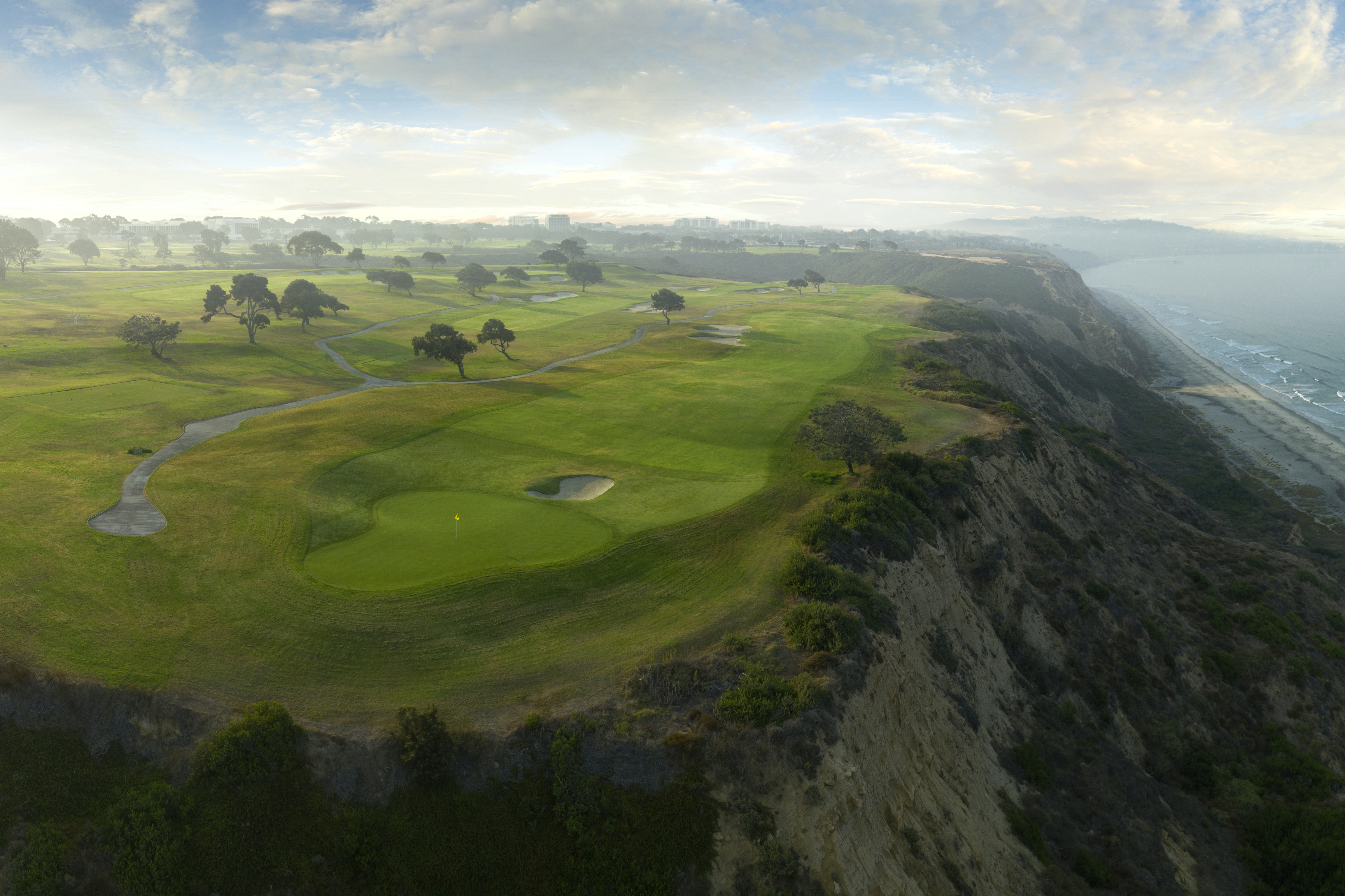Torrey Pines has been a beloved golf venue for decades. The San Diego-area municipal course is a feel-good story: open to anyone, cheap for locals and tough enough to test the pros. Golfers from around the world see the breathtaking images of the Southern California coastline during PGA Tour broadcasts each January and remark about the sheer beauty of the setting. And Tiger Woods’ iconic duel with Rocco Mediate at the 2008 U.S. Open was unforgettable.
What is forgettable at Torrey Pines’ South Course is the design itself.
Designed by the father-son duo of William P. Bell and William F. Bell in 1957, the course has been changed significantly over the years. While the Bells’ routing remains, all greens, tees and bunkers were redesigned by Rees Jones, first in a 2001 major renovation in preparation for the 2008 U.S. Open and with later refinements in 2019.
As is the case with any renovation, there is a goal for the work. Sometimes that goal is to build the best course possible. Sometimes the goal is to embrace and highlight the natural beauty of the site. Other times it is to restore the course to a specific period in time. Perhaps the goal is to make the course play as tough as possible.
If the goal was to make Torrey Pines’ South tough, then job well done. It is very difficult: Extraordinary length, narrow fairways, deep rough, punishing bunkers and multi-tiered greens make it one of the toughest layouts anywhere. And you can’t argue with the theater of 2008 or the champion it identified. On both counts Torrey gets an A+. Torrey also thrives as a business with golfers lined up from sunup to sundown – another A+.
However, if Torrey Pines wants to maximize the potential of the site it occupies from a golf design standpoint, it has a long way to go.
Let’s compare it to the other upcoming U.S. Open venues, using Golfweek’s Best Classic Courses rankings as a measuring stick. When comparing these sites purely on the basis of the natural setting, Torrey Pines is the best, with the possible exception of Pebble Beach Golf Links farther north on the California coast. Yet Torrey Pines’ South Course is light years behind the rest when it comes to the course rankings:
- 2021 U.S. Open: Torrey Pines South (No. 107 Classic)
- 2022 U.S. Open: The Country Club (No. 25 Classic)
- 2023 U.S. Open: Los Angeles Country Club North (No. 14 Classic)
- 2024 U.S. Open: Pinehurst No. 2 (No. 16 Classic)
- 2025 U.S. Open: Oakmont (No. 6 Classic)
- 2026 U.S. Open: Shinnecock Hills (No. 4 Classic)
- 2027 U.S. Open: Pebble Beach Golf Links (No. 9 Classic)

Shinnecock Hills in New York (David Cannon/Getty Images)
How can it be that the course with the best setting of the list can lag so far behind the others when it comes to the rankings of all courses built before 1960 in the United States? The answer, quite simply, is the design.
Let’s take a look at where Torrey Pines differs from the other courses and how it could be improved.

